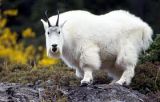- Forum
- General Discussion | Introductions | Off Topic Forum
- Photography General Discussion
- light or shadow?
light or shadow?
Post #102191
1) Try to underexpose a little the photo so that all the highlights in the picture are safe and not burned.... but the shadows will be too black.
2) Try to overexpose a little so that the shadows will be transparent but the highlights will be white.
-

- DevilNAngel
- New Kid On The Block
-
- Nikon d700
- Followers: 9
- Posts: 33
-
Points:
0
Post #102205
-

- Henry Peach
- Apprentice
-
- I currently use a 5DII or Sony Nex-3 most of the time.
- Followers: 50
- Posts: 2925
-
Points:
16
Post #102207
56SN0 wrote: I wonder which is better between 2 ways in case of a difficult light in photography.
1) Try to underexpose a little the photo so that all the highlights in the picture are safe and not burned.... but the shadows will be too black.
That's best for transparency film.
56SN0 wrote: 2) Try to overexpose a little so that the shadows will be transparent but the highlights will be white.
That's best for print film.
With digital you have to worry about both.
Post #102211
Henry Peach wrote:
56SN0 wrote: I wonder which is better between 2 ways in case of a difficult light in photography.
1) Try to underexpose a little the photo so that all the highlights in the picture are safe and not burned.... but the shadows will be too black.
That's best for transparency film.
56SN0 wrote: 2) Try to overexpose a little so that the shadows will be transparent but the highlights will be white.
That's best for print film.
With digital you have to worry about both.If a compromise needs to be made which way to go will depend on the subject, the goal of the photographer, and processing options.
Well that's just great, why can't it be as easy as 123. lol
-

- DestinDave
- Photography Hooked
-
- Canon EOS 450D
- Followers: 38
- Posts: 907
-
Points:
0
Post #102213
Now, with digital it's "Expose for the highlights, develop for the shadows" or "Expose to the right"..
There are a few ideas, depending on the dynamic range (dark to light values) of the scene you're shooting..
Always, if possible, shoot in RAW - you can make wonderful adjustments later..
If the dynamic range is beyond the capability of your camera's sensor, shoot a set of bracketed images (+/- a half or 2/3 stop) and blend them in post-processing..
Use fill-flash to add light to very dark areas..
Use neutral density filters while shooting to bring down strong highlight areas..
Dodging and burning areas of the image..
Cropping poorly exposed areas that can't be "fixed" conventionally..
Apply layer masks and gradients to lighten or darken areas needed..
Here's a very good (but lengthy) article:
www.webdesign.org/photoshop/photoshop-ba...-tutorial.15970.html
Dave Speicher
I thought I wanted a career.. turns out I only wanted paychecks.
dlspeicher.zenfolio.com
-

- Henry Peach
- Apprentice
-
- I currently use a 5DII or Sony Nex-3 most of the time.
- Followers: 50
- Posts: 2925
-
Points:
16
Post #102243
What is your personal taste? If you had to go one way or the other (light or dark) which do you prefer? Or does it depend on the subject, the situation, your whim...? Look to the work of the masters. They were dealing with the same dynamic range issues. Sometimes you can use processing techniques to push the limits of the gear and materials. Sometimes you have to work within the limits of the tools.
Post #102251
DestinDave wrote: In the film days the saying was "Expose for the shadows, develop for the highlights"
Now, with digital it's "Expose for the highlights, develop for the shadows" or "Expose to the right"..
There are a few ideas, depending on the dynamic range (dark to light values) of the scene you're shooting..
Always, if possible, shoot in RAW - you can make wonderful adjustments later..
If the dynamic range is beyond the capability of your camera's sensor, shoot a set of bracketed images (+/- a half or 2/3 stop) and blend them in post-processing..
Use fill-flash to add light to very dark areas..
Use neutral density filters while shooting to bring down strong highlight areas..
Dodging and burning areas of the image..
Cropping poorly exposed areas that can't be "fixed" conventionally..
Apply layer masks and gradients to lighten or darken areas needed..
Here's a very good (but lengthy) article:
www.webdesign.org/photoshop/photoshop-ba...-tutorial.15970.html
Wow, Thank you Dave.
- Forum
- General Discussion | Introductions | Off Topic Forum
- Photography General Discussion
- light or shadow?
Latest Reviews
The Olympus Pen E-P7 is an affordable micro four thirds mirrorless camera with 4K video capabilities, a 20.3MP sensor, and 121 focus points, making it a solid entry-level camera for beginners.
The Panasonic G9 II is a 25.2-megapixel micro four thirds camera with numerous features that make it punch out of its weight class, like 779 AF points, 5.8K video, and weather sealing.
The Fujifilm XT5 is a 40MP mirrorless camera capable of 6.2K video at 30p. With those specs, it’s an ideal choice for photographers needing a camera to pull double duty for imaging and video.
The Canon EOS R100 is an entry-level mirrorless camera introduced in 2023. But just because it’s an entry-level camera doesn’t mean it’s a bare-bones camera. Find out why in this review!
Forum Top Posters
-
1Scotty 8 posts
-
2Ruby Grace 7 posts
-
3TCav 6 posts
-
4Nefarious 3 posts
-
5Roger Lang 3 posts
-
6CharleyL 3 posts
-
7ShutterPal 3 posts
-
8James L 2 posts
-
9Chris Briggs 2 posts
-
10Clark Guay 2 posts
Latest Articles
The best photography jobs right now are a mix of tried-and-true gigs like wedding photography and new jobs highlighting AI’s capabilities, travel, and videography.
The Olympus Pen E-P7 is an affordable micro four thirds mirrorless camera with 4K video capabilities, a 20.3MP sensor, and 121 focus points, making it a solid entry-level camera for beginners.
Starting a photography business is one thing; sustaining your business over a long period of time is another. Use the tips in this professional photography guide to build something with longevity!
The Panasonic G9 II is a 25.2-megapixel micro four thirds camera with numerous features that make it punch out of its weight class, like 779 AF points, 5.8K video, and weather sealing.
Cinematic photography is an interesting genre that combines photographic and videographic skills along with effective storytelling techniques. The result? Highly impactful images!
Newborn photography requires skill, the right gear, and a lot of patience. This beginner’s guide discusses critical topics that will help you be more prepared for before, during, and after the shoot.
To fill the frame means to expand the footprint of the subject in your shot. Get in close, zoom in, crop the image, or use other techniques to bring the subject to the forefront.
With these simple yet effective beginner photography tips, you can avoid some of the common mistakes beginners make and get improved results with your images.














